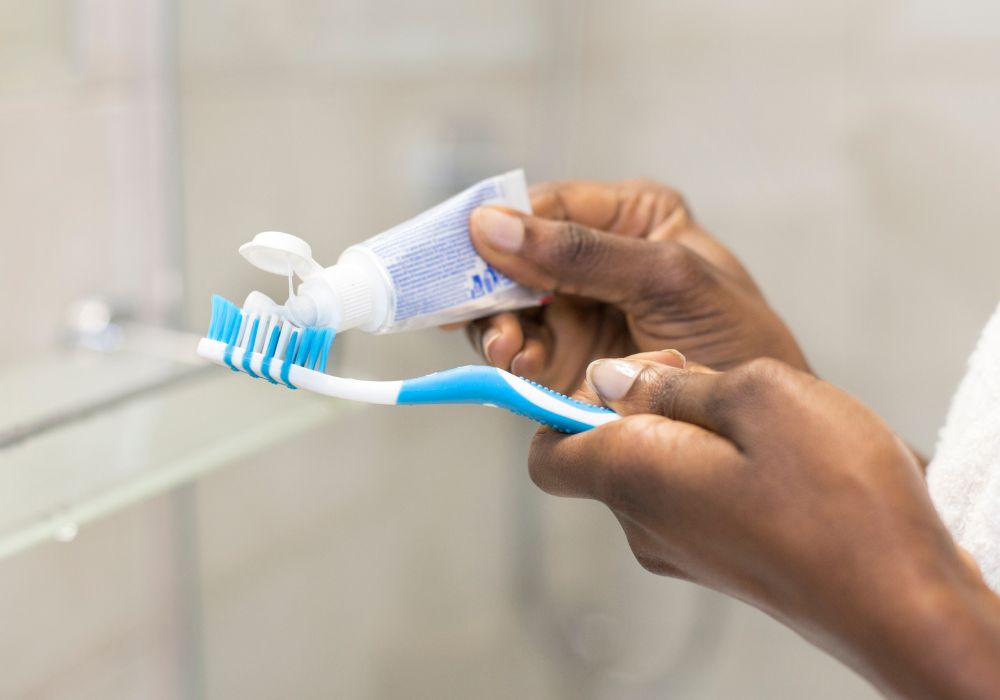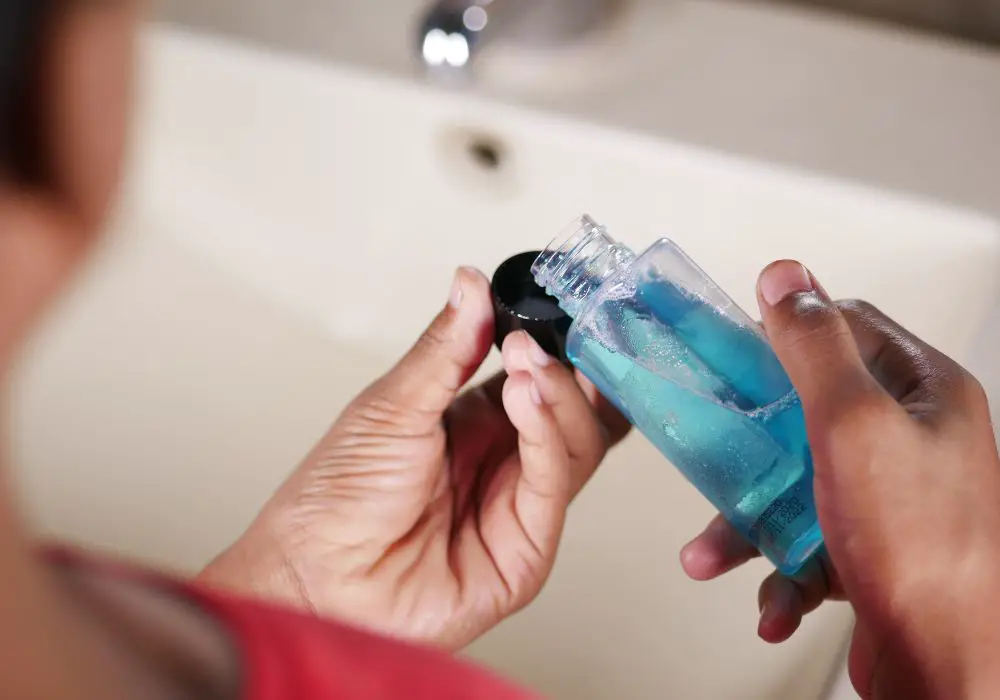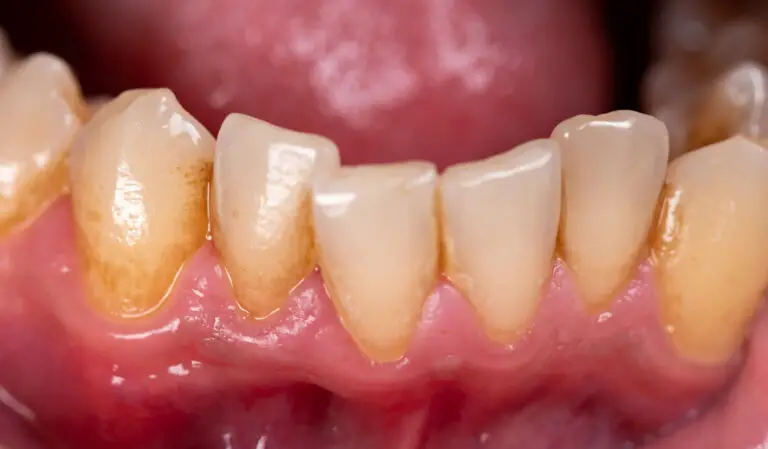Having strong, healthy teeth is incredibly important for your overall health and appearance. Weak, brittle teeth can lead to cavities, fractures, tooth loss, and other oral health issues. Thankfully, there are many effective ways you can strengthen your teeth and improve their mineral content right at home. Here are some of the best methods for reinforcing and remineralizing tooth enamel naturally.
Methods For Strengthening Your Teeth
1. Proper Brushing and Flossing

One of the most effective ways to keep your teeth strong is by brushing and flossing properly. This removes the plaque and food debris that cause cavities, gum disease, and enamel erosion.
- Brush your teeth thoroughly at least twice per day, for a full 2 minutes each time. Be sure to brush all surfaces – front, back, top, and bottom. Many people neglect the back teeth but cavities can occur anywhere in the mouth.
- Use a soft or extra soft bristled toothbrush and fluoride toothpaste. The bristles should gently graze your teeth without excessive scrubbing that can damage enamel. Replace your toothbrush every 3-4 months when the bristles begin to fray.
- Floss at least once per day, preferably before bedtime. Flossing removes the plaque and bacteria that get lodged between teeth where your toothbrush can’t reach. These areas are prime spots for cavities and gum disease to take hold.
- Don’t brush too hard. Aggressive brushing can actually strip away delicate enamel, so use gentle circular motions letting the bristles do the work.
- After eating or drinking anything acidic, wait 30 minutes before brushing. This allows time for your saliva to neutralize the acids so they don’t get pushed deeper into enamel by brushing right away.
Proper daily brushing and flossing keeps your teeth clean and free of cavity-causing bacteria. This prevents the decay and disease that weaken enamel strength.
2. Incorporate Fluoride

Fluoride is very effective for strengthening and remineralizing tooth enamel. It helps make the enamel more resistant to acid attacks from sugary and acidic foods that lead to cavities and erosion. There are a few ways to get extra fluoride:
- Use fluoride toothpaste and mouthwash daily as part of your regular oral hygiene routine. Fluoride toothpaste is imperative – a pea-sized amount is perfect.
- Drink fluoridated water either from your tap or bottled sources. Check if your local water supply contains added fluoride. Water labeled as purified, spring, or mineral is unlikely to contain fluoride.
- Get fluoride treatments professionally applied at the dentist’s office. These stronger concentrations of fluoride varnish or gel foam can help protect vulnerable areas.
- Ask your dentist about prescription-strength fluoride supplements if your teeth are especially weak or prone to cavities.
When incorporated into enamel, fluoride actually forms fluorapatite which is much harder than the hydroxyapatite that makes up enamel. Fluoride will make your enamel more decay-resistant and able to withstand acid attacks.
3. Consume Tooth-Strengthening Foods

Your daily diet significantly impacts your dental health. Focus on eating more foods that help strengthen and remineralize your tooth enamel:
- Dairy products like milk, cheese, and yogurt are excellent sources of calcium and phosphorus – two minerals critical for rebuilding enamel.
- Leafy green vegetables such as spinach, kale, swiss chard, and broccoli contain vitamin A, calcium, iron and folate for healthy gums and teeth.
- Citrus fruits are full of vitamin C which aids in collagen production and keeps connective tissues in the gums and teeth strong.
- Crunchy fruits and vegetables like apples, carrots, celery and sugar snap peas help clean teeth and stimulate saliva flow.
- Lean meats, fish, eggs and nuts provide protein as well as phosphorus and calcium for enamel remineralization.
- Green and black teas have antioxidant polyphenols that combat bacteria and protect teeth from acidic damage.
Eat a balanced diet focused on whole, natural foods over processed and sugary items. Getting a variety of tooth-strengthening nutrients will maximize enamel health.
4. Limit Damage from Sugary, Acidic Foods

It’s not just what you eat, but what you limit that makes a difference for strong teeth. You’ll also want to avoid foods that weaken and erode tooth enamel such as:
- Sugary foods like candy, cookies, soda, energy drinks, syrups, and sugary coffee beverages. The bacteria in your mouth feed on sugar and release acid as a byproduct. This acid dissolves mineral content from enamel, leaving it soft and porous.
- Acidic foods such as citrus fruits, tomatoes, and vinegar contain erosive acids that directly demineralize enamel. Acidic drinks like sports beverages, juice, wine, and soda are especially damaging.
- Sticky foods like caramels, dried fruit, or chewy granola bars cling to teeth allowing more time for cavity-causing bacteria to feed on them and release enamel-eroding acid.
By reducing your consumption of sugary, acidic, and sticky foods, you prevent a significant amount of the enamel damage that leads to weakened teeth prone to cavities and decay.
5. Chew Sugar-Free Gum

Chewing sugarless gum is an easy way to promote enamel strength. The act of chewing increases saliva production in your mouth. Saliva helps rinse away food particles and neutralize the acids produced by oral bacteria. Saliva also contains traces of minerals like calcium, phosphate, and fluoride to help rebuild weakened areas of enamel.
- Look for gum with the ADA Seal of Acceptance
- Chew gum for 20-30 minutes after eating acidic or sugary foods. This protects your enamel from the acid produced during the meal.
- Opt for gum sweetened with xylitol – a natural sugar alcohol that starves cavity-causing bacteria of their energy source yet is safe for your teeth.
6. Use Remineralizing Oral Rinses

There are specially formulated oral rinses made to strengthen enamel and reverse early decay. They contain concentrated minerals like calcium, phosphate, and fluoride. Using these rinses daily helps replenish minerals that have been lost from your tooth enamel due to acid exposure. This makes teeth harder and more resistant to future acid attacks.
- Use as the final step in your oral hygiene routine after brushing and flossing.
- Swish the rinse vigorously around your mouth for the full amount of recommended time (typically 60 seconds) to allow the minerals to fully penetrate. Do not eat or drink for 30 minutes after to maximize the strengthening effects.
- Look for the ADA Seal of Acceptance on the label. Popular remineralizing rinse ingredients include nanohydroxyapatite, calcium sodium phosphosilicate, and casein phosphopeptide-amorphous calcium phosphate (CPP-ACP).
7. Schedule Regular Dental Cleanings and Treatments

Visiting your dentist every 6 months for a professional cleaning and exam is key for detecting issues early and keeping your teeth strong. The specialized tools and professional strength treatments available at the dentist’s office include:
- Dental cleanings to remove plaque, tartar, and stains that you can’t eliminate fully at home. This prevents damaging buildup and decay.
- Fluoride treatments to strengthen vulnerable areas prone to cavities. These higher-potency fluoride applications offer more protection.
- Sealants to shield pits and grooves on chewing surfaces where decay is likely to develop. The plastic resin bonds to teeth forming a protective shield.
- Antimicrobial rinses that reduce bacteria in the mouth for cleaner teeth and gums. These prescription-strength rinses get to hard-to-reach areas.
Don’t wait until you have a severe problem before seeing your dentist. Regular professional care removes hazards and decay before they destroy your enamel.
8. Practice Gentle Brushing Motions

Pay attention to how you brush as well as how often. Using gentle motions instead of vigorous scrubbing protects your enamel coat:
- Avoid aggressive scrubbing which over time can start to wear down and thin your enamel layer, causing sensitivity.
- Opt for soft or extra soft bristled brushes. Hard bristled brushes are too abrasive on tooth surfaces and can lead to gum recession.
- Brush gently using short, circular motions so the bristles lightly graze each tooth. Let the brush do the work – no need to apply excess pressure.
- Avoid brushing right after eating or drinking anything acidic. This just drives the erosive acids deeper into your enamel before saliva can neutralize them. Wait at least 30 minutes if possible.
With the proper brushing technique, you can effectively remove plaque without damaging the enamel that keeps your teeth strong and healthy.
9. Monitor Oral Health Changes
Keep a close eye on your teeth and oral health status to detect problems in the early stages:
- Monitor for tooth sensitivity to hot, cold, or sweet foods and drinks as this can signal enamel loss.
- Watch for any unusual discolorations which may indicate underlying decay.
- Check smooth shiny areas that could be early enamel erosion.
- Inspect for cracks, fractures, or chips and get them sealed ASAP before they worsen.
- Note any changes in your bite as this can alter stress on certain teeth.
Don’t ignore small issues like minor tooth sensitivity – report any unusual symptoms or concerns to your dentist right away so they can determine if additional protective treatments are needed. Catching problems early prevents more serious enamel damage down the road.
10. Consider Restorative Dental Work if Necessary

If decay or structural damage already exists, certain dental treatments can repair the affected area and actually strengthen your tooth:
- Dental fillings remove decayed material and replace it with a tooth-colored bonding material to prevent further damage in that area.
- Crowns cap an entire weakened tooth to protect it from fracturing under pressure. The crown restores the tooth’s structure, function, and shape.
- Dental implants replace missing teeth which allows you to chew properly again. The titanium implant fuses with your jawbone to serve as an artificial root. A realistic porcelain crown is attached.
- Bonding applies a tooth-colored resin material over cracks, chips, gaps, or discolorations to seal the vulnerable area.
Work with your dentist to determine which solutions suit your particular oral health needs. Ongoing issues like excessive wear, fractures, gum disease, or missing teeth sometimes require dental work for healthier and stronger teeth.
11. Maintain Diligent Oral Hygiene Long-Term
The key to a lifetime of strong, healthy teeth is maintaining exceptional oral hygiene habits. This includes brushing and flossing consistently, limiting sugary junk food, staying hydrated with fluoridated water, and seeing your dentist at the first sign of problems. With diligent daily care and smart dietary choices, you can enjoy permanently strong teeth and a radiant smile. Don’t wait until you have severe dental issues – take preventative action now to reinforce and remineralize your enamel!
Frequently Asked Questions
Here are answers to some common questions about how to strengthen teeth at home
1. How often should I brush each day for stronger enamel?
It’s recommended to brush thoroughly twice per day, for at least 2 minutes each time. This regular plaque removal is the best way to prevent cavities and enamel erosion. You can brush more often, but take care not to overdo it since very frequent brushing can damage enamel over time.
2. Are whitening toothpastes okay for strengthening enamel?
Whitening toothpastes are fine to remove some surface stains but they tend to be more abrasive. For strengthening enamel, it’s best to use a regular fluoride toothpaste or one specifically formulated for enamel protection and remineralization. Avoid using whitening toothpaste more than once per week.
3. What can I do about weak spots or thin areas in my tooth enamel?
Ask your dentist about targeted fluoride treatments, dental sealants, or calcium and phosphate remineralizing gels that can help strengthen vulnerable areas prone to fracture or decay. These professional products are much more powerful than over-the-counter options.
4. Why do sugary and acidic foods damage and erode tooth enamel?
Sugary foods feed the bacteria in your mouth which produce acids as a metabolic waste product. Acidic foods and drinks contain high amounts of erosive acids. Together, these acids lower pH levels in your mouth, dissolving away critical minerals from tooth enamel and leaving it softer and weaker.
5. How many times per day is it helpful to chew sugar-free gum?
Chewing sugarless gum for 10-20 minutes 2-3 times per day is recommended, especially after eating. Look for gum with xylitol as the sweetener, and the ADA Seal of Acceptance. The gum boosts saliva to neutralize acids and redeposit minerals back into enamel after meals or sugary snacks when your teeth are most vulnerable.






